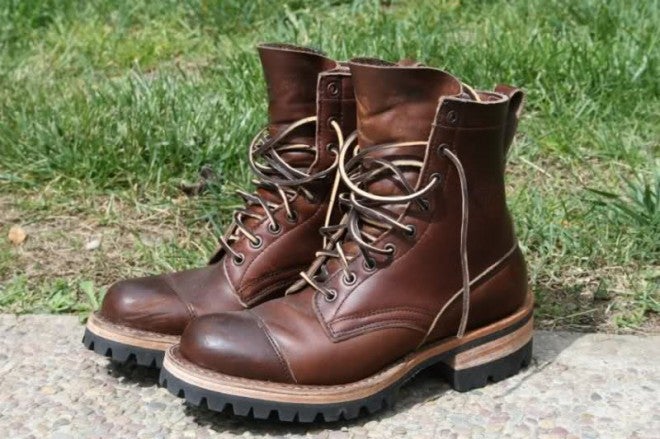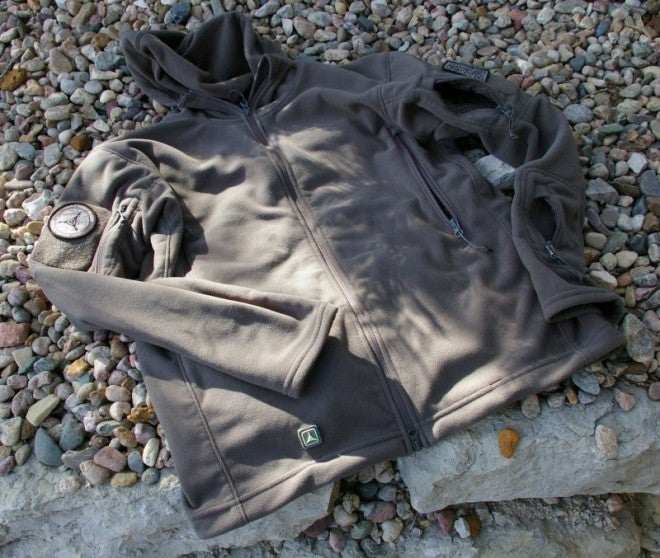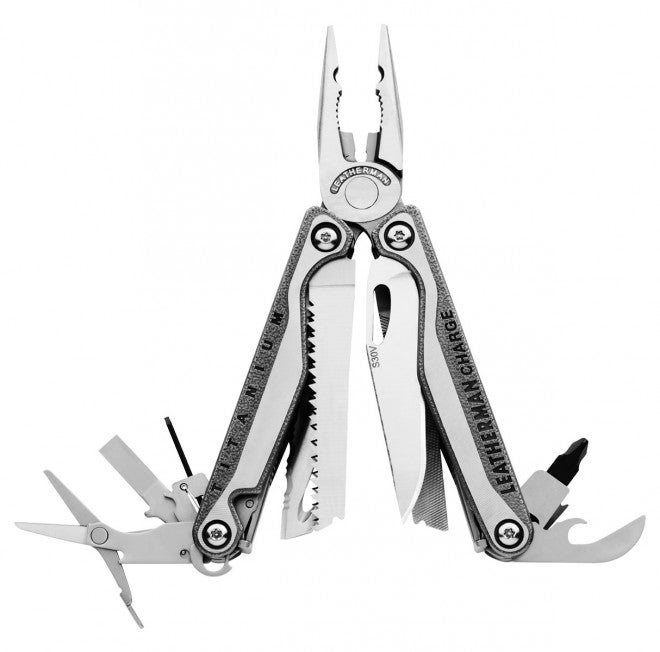Gearing up for a first hike: clothing and edged tools
Jon Stokes 09.10.13

A friend of mine is planning to hike Yosemite’s Half Dome, an accessible yet steep hike that’s popular with folks in and around the Bay Area. He’s planning on spending the night out on the trail, and if this goes well he’d like to do some more challenging solo hikes in the future. But he hasn’t hit the trail in quite a few years, and he needs to gear up for his Half Dome adventure and, more importantly, for the adventures that will inevitably follow. So, he hit me up for gear suggestions, and of course I’m happy to oblige.
I figured instead of sending him a long email, I’d post my recommendations here and invite the community to chime in.
A few caveats before I get started, though. First, I’m not a hiker. I’m more of a hunting, fishing, and base camping type of guy — drive, boat, or hike in, and set up camp in one spot for a few days so that you can do whatever you came out there to do. So judge my recommendations accordingly, and feel free to chime in with lighter options or tweaks and refinements if you’re more of a hiker. The second caveat is that I have champagne taste in gear, so others will probably know of cheaper options. The third caveat is that these are my personal recommendations, and in recommending these items I’m not claiming that each one is the ultimate pinnacle of whatever. It’s more like, “these things are really great, and you can’t go wrong with them.”
I’ll start out with clothing and edged tools in this first article, and some as yet undetermined number of subsequent articles will focus on food, fire, water, shelter, a backpack, first aid, and miscellaneous emergency items.
Clothing
The number one rule of clothing yourself for the outdoors is to avoid cotton, aka “Death Cloth.” With a sudden rainstorm and cotton clothing to soak up and hold moisture, you can get hypothermia in 50 degree weather. Go with wool and synthetics for every single item of clothing if there’s even a small chance that the weather will get cool at any point day or night.
Rip stop pants are popular, and I’d just hit Amazon.com or REI.com and see what gets the best reviews there. You could also check out Triple Aught Design if you want something that you could conceivably wear in a non-hiking context without looking like a total dork. I actually wear Filson oil finish single tin pants with a leather hem when I’m in the brush. They’re practically waterproof and indestructible, but they’re heavy and I wouldn’t want to hike in them. Along those same lines, I have a pair of the TAD Covert DC pants that I love — they’re like Carhartts on steroids. Like the Filsons, they’re heavy and made of canvas, but unlike the Fisons they aren’t water repellent so if you get caught in a fall our winter downpour then you’re in big trouble. So if you we want to go the TAD route for hiking, be sure to get one of their synthetic pants variants, and not the canvas kind.
For socks, I prefer thinner wool socks, even in summer. I’m a huge fan of Teko socks, which you can often pick up at REI.
For shirts, I’m a fan of Columbia’s Omni Shade long sleeve shirts; these get great Amazon reviews, too. But again it’s a matter of taste, as long as your taste doesn’t run to cotton.

When it comes to footwear, don’t skimp — just buy the best you can afford. It’s not possible to go wrong with the high end of an established brand like Asolo, Salomon, or Vasque. Meindel also has tons of fans. Visit some sporting good stores and try on the high-end hiking boots from those brands to see what works for you.
Personally, I wear Filson uninsulated Uplanders. I’ve hunted and fished in the bush for long periods of time in the Filsons, but I wouldn’t recommend them for hiking. They’re super durable, and if you like all natural materials then they’re a great hunting/fishing/camping option, but for hiking you can spend less money and get better boots.
I actually have some brown, kangaroo leather Vibram KSO Trek Five Fingers that I’d probably hike in, depending on the time of the year. They’re warmer than regular VFFs so they work in cooler weather, and the leather dries out pretty fast when it gets wet. A lot of guys use these for trail running and very long hikes. I work from home in my bare feet all day, so my muscles are used to going shoeless. If you normally work in shoes, especially shoes with heels, you’ll need some time in the VFFs to build up your feet and ankles before a hike.
If you just want to go nuts, and do it in style, get yourself a pair of White’s. Some of the White’s boots are dorky, but some (like this guy’s) look incredible. Smokejumpers, linemen, loggers, and other outdoors types swear by these. You’d probably want to buy these from Baker’s.
The only other boot brand I know of that has a cult following similar to Whites is Limmer, which is another handmade boot brand that people get obsessed with. I personally have little interest in Limmers, since they’re heavy and they have a long break-in time. Unless you’re really determined to buy some hiking boots that will last the rest of your life, and you’re willing to pay for it in added weight and break-in effort, I’d go with a brand that uses more modern materials. Just buy some comfortable, quality boots and when they wear out in a few years, replace them; leave the Limmers to the “heritage” fashion types.
Whatever you do for footwear, bring talcum powder and moleskin pads or duct tape in order to deal with blisters. Personally, I go for duct tape because it’s multi-use.
For underwear, I love Ex Officio boxer briefs, and so does Amazon. You can comfortably go without washing them for multiple days, and they dry quickly.
Finally, if you’re headed out in the fall, buy a TAD Ranger Hoodie for outerwear. And while you’re in the TAD Store in SF, pick up one of their merino wool Praetorian hoodies — they’re amazing, especially for the price. I should post a review of it here, because it’s awesome and even my wife is jealous of it. It sorta kills me that I moved from the Bay Area to Austin, Texas about two weeks after finding the ultimate hoodie for San Francisco weather.
Pack a fold-up pancho in case it rains. Just get one of these space blanket ones, because it can double as emergency shelter. Unless you’re expecting rain, in which case get a rain coat; I don’t really have recommendations for that, though, but maybe some of our readers do.
Bring some durable gloves. Whether you’re chopping firewood or just whittling a stick, some solid gloves can spare you a ton of headache and pain in the bush. I bought some deerskin gloves work gloves from Home Depot that I use. Deerskin is super tough but not too thick. If you can’t find deerskin, just get something tough, comfortable, and light.
Knives, multitools, and hatchets
When it comes to knives, your first order of business is to buy a multitool. If you get a good one, you could theoretically just stop there and not buy another knife. I’m a huge fan of the Leatherman Charge Ti. Premium S30V blade steel, Titanium handle slabs that are comfortable and lightweight, and a great selection of tools. What’s not to love? Other folks like the Wave, or for a bigger option you could get the Surge.
SOG also makes a very nice line of multitools that many people swear by, but I don’t have personal experience with those.
If you want to roll like a Seal Team Six guy, you can get a Gerber multitool (per No Easy Day), but I’m still scratching my head about that particular gear choice on the part of America’s elite warriors.
As great as multitools are, I’m more of a fan of fixed blade knives for safety/durability reasons, and I always have one on me when I’m in the woods. You can safely do a lot more with a fixed blade than you can with a folder, because they can stand up to more abuse without breaking. When a folding knife suddenly breaks under pressure, that blade can spring with considerable force and pierce an artery, an eye, a lung… you get the idea. So if you can only carry one knife, carry a multitool, but if at all possible it’s best to carry both a multitool and a fixed blade.
For an inexpensive, light fixed blade, you can’t go wrong with the legendary Mora knife. I have one of these, and it’s pretty fantastic, despite being under $15. It’s way better than anything I had when I was in Boy Scouts, and I went through a lot of knives back then. Also, I know it seems kind of odd to buy a brightly colored knife, but once you drop that dark green one in the brush at twilight, you’ll wish you had something like this. (I prefer the carbon steel blade to the stainless blade, though.)
If you’re up for spending a little money on a fixed blade, then the Falkniven F1 is where it’s at. The F1 is sort of the Scandinavian counterpart to the USMC KA-BAR, which is also a great knife, but a little on the large side. If you want to spend even more, you can upgrade the look of the F1 whole package with one of the customized F1 knife and sheath combos from JRE Industries. I have their desert ironwood F1 with a bushcraft-style leather sheath (plus firesteel loop), and despite the size of my knife collection that F1 is my go-to camping knife. But to be honest, the JRE upgrades are all about aesthetics — the stock F1 and sheath combo that you’ll find on Amazon is all you’ll ever need in a camp or survival knife. And when you’re done with it you can pass it on to your kids.
If you want to kick it up a few more notches in terms of price, performance, and maybe Rambo factor, there are tons of great options — too many to list. To randomly throw some ideas out there: the Chris Reeve Green Beret knife or Pacific, any of the fixed blades on this page, any of the larger Falkniven blades, and so on.
For the ultimate in fighting bears or chopping firewood with a fixed blade, Busse still has some of BillJ’s beloved SARGE 7’s in stock, but hurry because once this run is gone, then your only option for picking up one of these bad boys is the (heavily marked up) secondary market.
If you really don’t want to carry a fixed blade, you could always pack a camp hatchet instead for chopping and hammering chores. 99% of what you’d get into trouble doing with a folding knife can be done with a good hatchet, and I know experienced guides for whom the multitool + hatchet combination is their standard load-out — no fixed blade needed. Plus, it’s much nicer to hammer in tent stakes with the back of a hatchet than it is to use a rock or a knife handle.
I have a Gransfors Bruks Wildlife Hatchet that I love. The Gransfors Bruks axes and hatchets are legendary for a reason; my wildlife hatchet is definitely one of the finest, old-school, handcrafted tools I own. But I should note that the Fiskars X7 hatchet is a fraction of the price and weight, and bushcrafters are flipping out over how great it is. So if you want to pack a hatchet instead of a fixed blade, and you don’t care so much about aesthetics, you can’t go wrong with the Fiskars — it’s sort of the Mora knife of hatchets right now.
Ultimately, though, I think hatchets may be more of a base camping type thing. But I’d be interested to hear from other hikers. Do you guys carry a hatchet, or is it just a multitool and/or small fixed blade?
If you think I’ve left something out, or am out to lunch with one or more of my recommendations, let me know in the comments.

